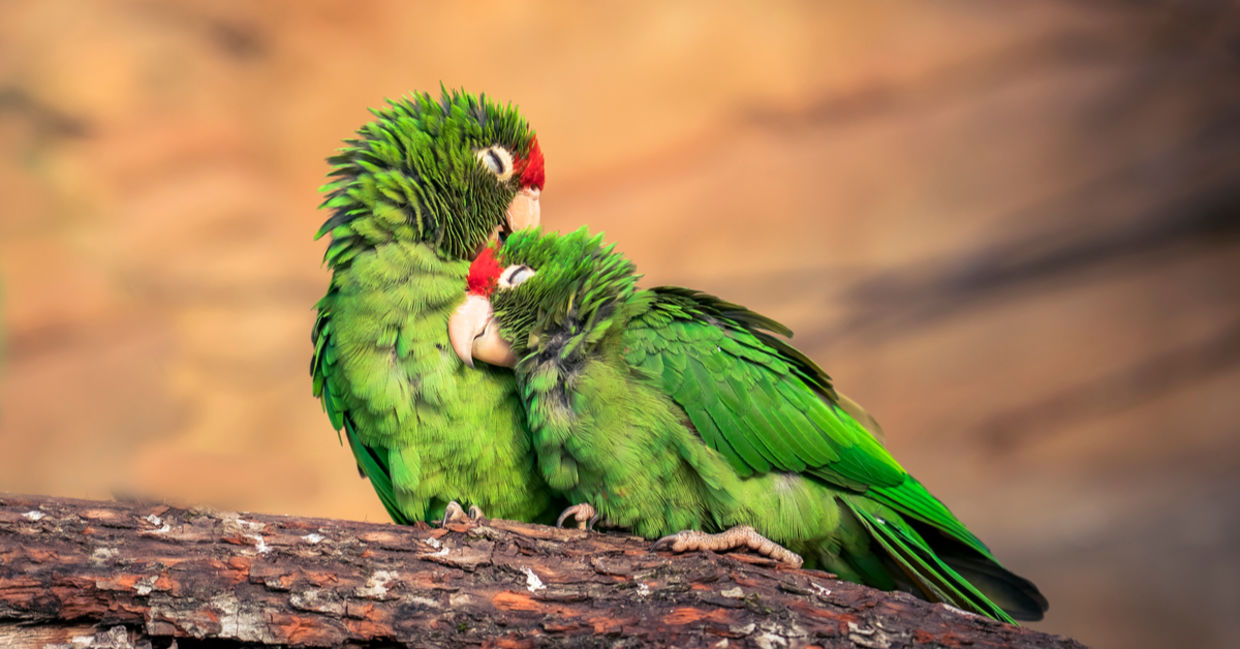
(Jiri Fejkl / Shutterstock.com)
The willingness to think of others extends to more animal species than previously thought. A new study has observed African grey parrots spontaneously “lending a wing”.
In an experiment, researchers placed two African grey parrots inside separated clear-walled compartments.
Now time for a little game!
A researcher waited beside the compartments with walnuts. The parrots could trade metal tokens for yummy walnut treats. The catch: one parrot had the tokens, but only the other bird could reach the researcher’s hand to get the walnuts.
A hole between the two birds allowed the first parrot, with the tokens, to pass one to its neighbor. Then, the second parrot could exchange the token for a walnut.
Sure enough, the parrots caught on to the game. The first parrot picked up a token and handed it to its neighbor, allowing the second parrot to exchange it for a treat — clever birds!
"We found that African grey parrots voluntarily and spontaneously help familiar parrots to achieve a goal, without obvious immediate benefit to themselves," shared co-author of the study, Désirée Brucks, of the Max Planck Institute for Ornithology, Germany.
This type of intrinsic willingness to help doesn’t just exist in one species of parrot. The research group observed similar behaviors in blue-headed macaws.
In fact, nature is full of examples of animals helping each other. Meerkats know all about teamwork. They live in large communities of 50 or more. While some forage for food, the others keep a lookout for predators like eagles and hawks that could swoop from above.
While Charles Darwin's theory of evolution by natural selection may have pointed to "survival of the fittest", more recent research highlights the importance of a species working together for the greater good.
Darwin himself saw holes in his own theory, which he called a special difficulty, noticing the tendency for ants to work cooperatively, even selflessly sacrificing themselves, in raising the offspring of the queen.
Scientists may have located this “altruism gene” that causes animals — including humans— to cooperate. Richard Dawkins first came up with the concept in his 1976 book, The Selfish Gene.
Known as the “green-beard effect”, scientists now theorize that animals can recognize genes within their own species best suited to make copies of themselves. So that means ants work together based on an instinct that the genes of the queen’s offspring will best represent the species in the next generation, even though the individual ant will not reproduce.
The green-beard effect often attributes altruism to animals who share similar genes within a species. While this may be true, nature also demonstrates examples of animals of different species helping each other, too!
Researchers have observed humpback whales protecting smaller species, like Weddell seals, from orca attacks.
In Egypt, plover birds perch within the open mouths of Nile crocodiles waiting for food. The crocs happily let their little friends share a snack as they benefit from a routine dental cleanup in the process!
And speaking of ants — woodpeckers and ants, normally natural enemies, even work together sometimes. Every spring, rufous woodpeckers lay their eggs inside the black tree ant nests. The ants even carve out a hole to create space for the eggs to hatch.
And yes, even humans share altruistic tendencies. Studies suggest that human beings are hard-wired to help each other out. Despite the grim stories you may read on the news, over millions of years, the human species has evolved to cooperate and get along with others in order to advance together.
YOU MIGHT ALSO LIKE:
Service Animals Work Hard to Help People with Disabilities
This Man Adopts Senior Dogs Who Cannot Find Homes
6 Animal Rescue Organizations That Make a Real Difference







